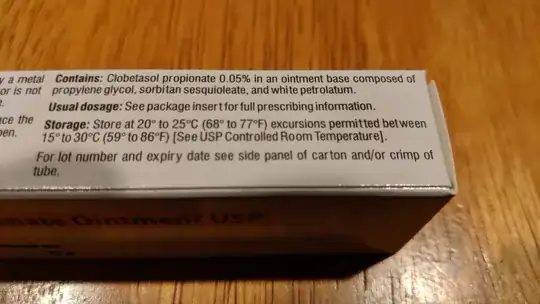Let's start with a simpler question, and build up.
Do drugs last longer than the expiration date?
Yes, for most but not all drugs.
The American Medical Association were concerned about the wastage of pharmaceuticals due to expiry dates. The US Department of Defense has been collecting data on this, because they stockpile a billion dollars worth of drugs (original source: Wall Street Journal).
The FDA examined the DoD data on over a hundred drugs:
Based on testing and stability assessment, 88% of the lots were extended at least 1 year beyond their original expiration date for an average extension of 66 months, but the additional stability period was highly variable. The [DoD] data supports the assertion that many drug products, if properly stored, can be extended past the expiration date. Due to the lot-to-lot variability, the stability and quality of extended drug products can only be assured by periodic testing and systematic evaluation of each lot.
The Wall Street Journal article quoted a former Food and Drug Administration (FDA) employee:
Joel Davis, a former FDA expiration-date compliance chief, says that with a handful of exceptions - notably nitroglycerin, insulin and some liquid antibiotics - most drugs are probably as durable as those the agency has tested for the military. "Most drugs degrade very slowly," he says. "In all likelihood, you can take a product you have at home and keep it for many years."
Davis blames the pharmaceutical company's marketing for this.
Now, let's address how the dates are determined.
In the USA, the FDA require pharmaceutical companies to perform "stability testing" on new drugs. (As I understand it, the FDA doesn't normally directly test the drugs, but requires the manufacturer to submit forms describing the testing process used.)
The standards that must be followed are listed here but in particular: Q1A Stability Testing of New Drug Substances and Products
Q1A gives some recommended (default) storage conditions to test at, including:
- Minimum 12-month storage at a (high) room temperature: 25°C ± 2°C/60% RH ± 5% RH or 30°C ± 2°C/65% RH ± 5% RH
or alternatively:
- Minimum 12-month storage in a refrigerator: 5°C ± 3°C
They are also expected to be tested at slightly higher temperatures and slightly higher relative humidity for shorter periods.
Note that maintaining the cold-chain for refrigerated drugs is difficult and expensive - it is under close scrutiny by the FDA. It is easier to store drugs at room temperature throughout the manufacturing and distribution process.
So, a manufacturer wants a room-temperature stable drug, and the FDA wants drugs to be tested at room temperatures - they even want refrigerated drugs to be tested at room temperatures for shorter periods.
Having two expiration dates: refrigerated and room-temperature - would require careful tracking of each package to know whether it has always been refrigerated.
How is this turned into an expiration date?
I found a confusing claim in the RAPS Summary FAQ about the regulars says:
What's the maximum level of shelf life FDA will allow?
Twice the available long-term data at the time of approval, or up to 24 months.
If this was true, if a manufacturer tests a drug for 12 months, and monitors the breakdown of the active ingredient and predicts it will remain effective for five years, they may only claim 24 months. Even if they worked out that putting it in the fridge would extend the shelf-life to 10 years, they must only guarantee it for 24 months.
So, if true, it is difficult to accept Davis's blame on the manufacturers for limitations imposed by the FDA.
However, this clashes with other information I found such as drugs.com:
The expiration date of a drug is estimated using stability testing under good manufacturing practices as determined by the Food and Drug Administration (FDA). Drug products marketed in the US typically have an expiration date that extends from 12 to 60 months from the time of manufacturer.
Australian sources (not under the FDA yoke) also describe longer expiry dates.
So, to summarise the answer to the original question:
The manufacturers probably haven't tested how long room-temperature drugs would last in the fridge, because:
- They aren't required to conduct these (expensive) tests.
- Even if they tested it, they might not be allowed to advertise it.
- Refrigeration is expensive, so stockists want to avoid it.
- Fridges are damp and that affects some drugs and paper-based packaging.
- There is room to extend the expiration dates of many drugs at room temperature, without adding refrigeration to the mix.
